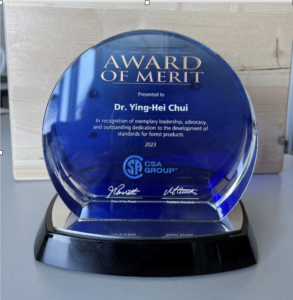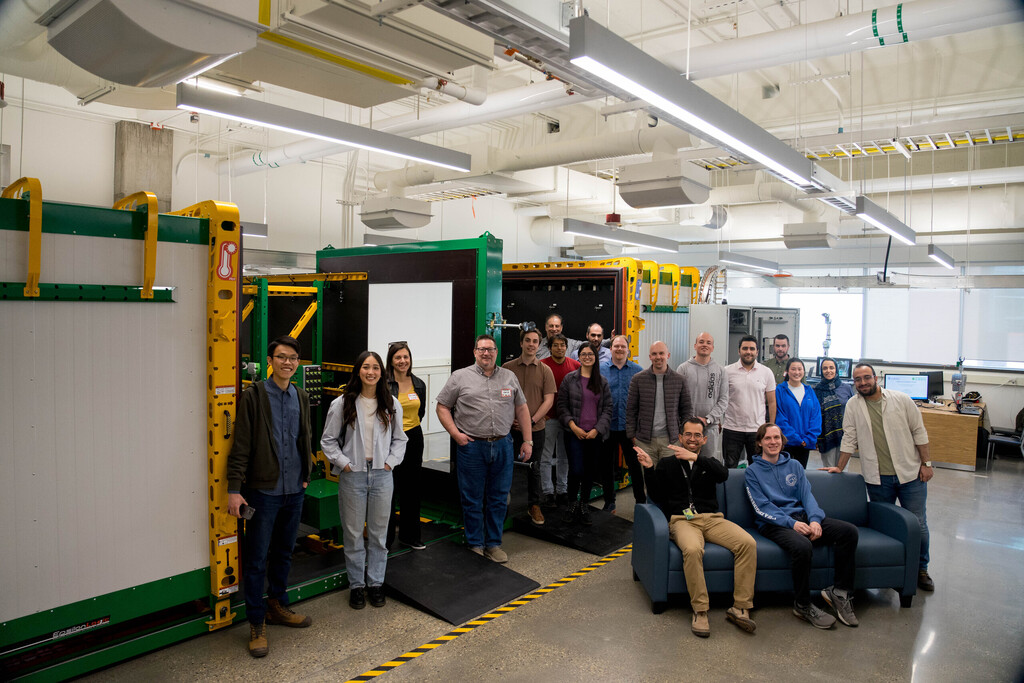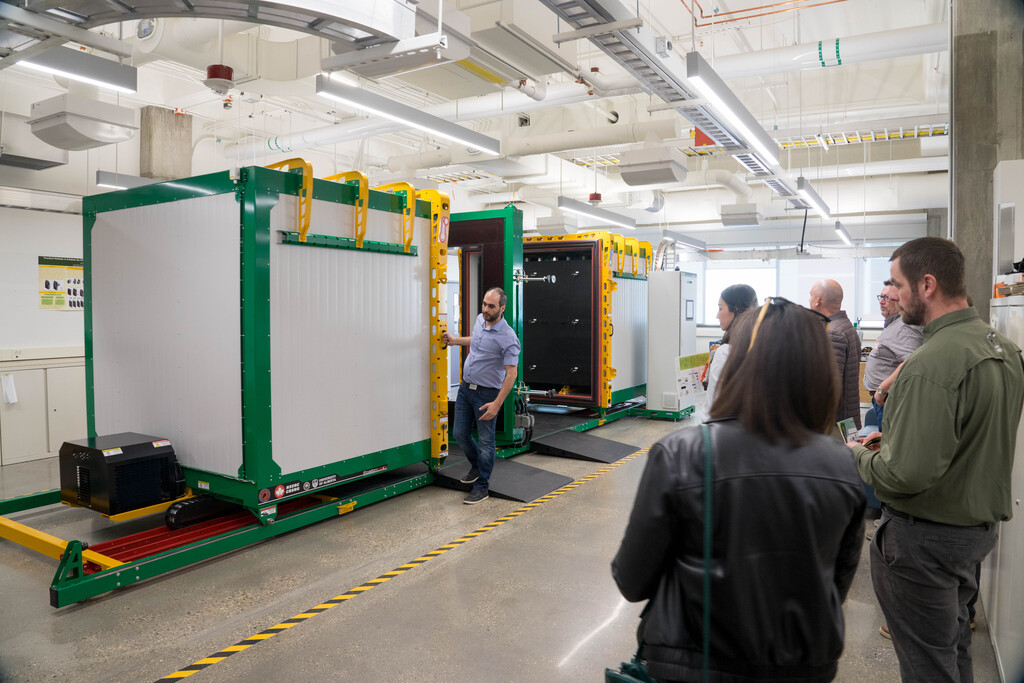NEWS AND EVENTS
The 2nd Canadian Sustainable Additive Construction Conference (CSAC 2025) is approaching. This event provides an opportunity to explore the future of 3D printing, sustainability, and innovation in construction. Industry leaders, researchers, and students will come together to discuss advancements in sustainable additive construction.
Date: May 8, 2025
Location: University of Alberta
Conference Link: Canadian Sustainable Additive Construction Conference (CSAC 2025)
Why Attend?
Connect with industry leaders and expand your professional network
Present research through poster presentations (for researchers and students)
Industry professionals can apply to speak and share their expertise
Limited spots available – first come, first served
This event is organized by SMART LAB, University of Alberta, and supported as a Nasseri School Initiative.
For more information, contact Dr. Rafiq Ahmad at rafiq.ahmad@ualberta.ca.
Let’s build the future one layer at a time.
Conference Dates: May 26–27, 2025
Timber Connections Workshop: May 28, 2025
Location: Hilton Garden Inn, Downtown Ottawa
About the Conference
We are pleased to invite you to the 2nd NextGen Wood Conference in Ottawa, a premier event that brings together researchers, industry leaders, and professionals from across the wood construction and engineering sectors. This conference will feature the latest innovations and research in wood science, with a strong focus on practical applications and future developments in sustainable construction.
The program includes two days of presentations, panel discussions, and networking opportunities, followed by a Special Workshop on Timber Connections led by experts in the field.
Program Schedule
Sunday, May 25, 2025
- Reception & Registration: 5:00 PM – 7:00 PM
Monday, May 26, 2025
- Opening Keynote Address
- Technical Sessions: Focus on Project Themes, with industry and academic contributions
- Networking Breaks: Breakfast, lunch, and coffee provided
- Gala Dinner: Evening reception
Tuesday, May 27, 2025
- Continuation of Sessions: Parallel technical tracks on Project Themes
- Conference Concludes: 3:00 PM
- Program Advisory Board (PAB) Meeting: (for PAB members only, evening session)
Wednesday, May 28, 2025
- Special Workshop on Timber Connections: Organized by Dr. Thomas Tannert and Dr. Alexander Salenikovich. This workshop will include thematic presentations, a keynote lecture, and a poster session, providing participants with valuable insights into the latest research and practical applications in timber connections.
Registration & Fees
- Timber Connections Workshop (only): $100
- NextGen Wood Conference (only): $300
- Full Conference + Workshop: $350
- Event Registration: NextGen Wood Conference 2025 Registration
Note: Highly Qualified Personnel (HQPs) supported by the project are required to attend the conference with registration fees waived. Principal Investigators (PIs) are also encouraged to attend.
Abstract Submission
For details, please follow the link: HERE
Accommodation
We have secured a block of rooms at the Hilton Garden Inn, Downtown Ottawa for conference attendees.
For special rates and booking information, please use the link below:
Hotel Booking Link: Hilton Garden Inn Booking
Key Links
- Event Registration: NextGen Wood Conference 2025 Registration
- Add to Calendar: NextGen Wood Conference 2025 Calendar
SPONSORSHIP PACKAGES
We encourage you to register early and mark your calendars for this important event. Join us to explore the future of wood construction, exchange ideas with peers, and gain valuable insights from leading experts in the field. We look forward to welcoming you to Ottawa in May 2025!
 Dr. Ying Hei Chui, Director of the Nasseri School, has been honored with the prestigious 2023 CSA Award of Merit for his outstanding contributions and leadership in the development and advancement of voluntary standards.
Dr. Ying Hei Chui, Director of the Nasseri School, has been honored with the prestigious 2023 CSA Award of Merit for his outstanding contributions and leadership in the development and advancement of voluntary standards.
With a career spanning over three decades, Dr. Chui has emerged as one of Canada’s leading researchers in timber engineering and engineered wood products. Between 2017 and 2023, he was NSERC Industrial Research Chair in Engineered Wood and Building Systems at the University of Alberta. Prior to joining the University of Alberta, he held the esteemed New Brunswick Innovation Research Chair in Advanced Wood Products and served as the Director of the Wood Science and Technology Centre at the University of New Brunswick.
A recent milestone in Dr. Chui’s career has been his lead role in establishing the Canadian Wood Construction Research Network (CWCRN). This collaborative network brought together 31 university professors, 20 partner scientists/engineers, and numerous students and industry partners. The CWCRN, supported by a $6.25 million NSERC Alliance Grant, focused on advancing timber engineering and promoting sustainable construction practices through its five-year program, Next-Generation Wood Construction.
Dr. Chui’s leadership has been instrumental in driving innovation, fostering excellence, and promoting the use of timber in construction. His expertise and dedication have contributed to the development of voluntary standards that enhance safety and sustainability in the industry.
Read more: https://www.csagroup.org/wp-content/uploads/CSA-2023AwardOfMerit_BIL_Accessible_Chui-Ying-Hei.pdf
Industry 4.0 Technologies Workshop for Small and Medium-sized Enterprises
We are excited to announce the upcoming Industry 4.0 Technologies Workshop, organized by the Nasseri School in collaboration with Professors from TEC de Monterrey. This workshop aims to foster knowledge exchange and collaboration between academia and industry professionals in the field of advanced technologies. Event Details:
- Date: June 6th and 7th, 2023
- Time: 9:00 AM onwards
- Venue: ETLC 9120 116 Street Northwest Edmonton, AB T6G 2V4
The workshop will provide a unique opportunity for industry professionals to explore the latest advancements in Industry 4.0 technologies and their practical applications. It will feature insightful presentations, interactive sessions, and hands-on demonstrations led by experts in the field. During the workshop, we will be utilizing the state-of-the-art facilities of the Nasseri School Lab to conduct demos and hands-on workshops. Please note that due to space limitations, this workshop is exclusively open to industry professionals.To secure your spot, please register through Eventbrite using the following link: [Ticket Registration] We look forward to welcoming you to the Industry 4.0 Technologies Workshop and fostering meaningful interactions among industry experts and academia. For further inquiries, please contact us at SMART LAB: smartlab@ualberta.ca or Dr. Rafiq Ahmad: rafiq.ahmad@ualberta.ca

Researchers at the University of Alberta have developed a new application that uses Google Earth to quickly and automatically create solar panel layouts for buildings. The goal is to reduce carbon dioxide emissions by making solar energy more accessible. The application uses freely-available 3D satellite imagery and models from Google Earth to trace building rooftops and find the best positions for maximum sunlight exposure. By using this technology, ideal rooftop solar panel layouts have been identified for several buildings on the North campus, including the Cameron Library, Earth and Atmospheric Sciences building, and the Administration building. The researchers plan to expand the application to the entire North campus, with the potential to use it in entire cities. This technology could significantly reduce carbon emissions and increase the use of renewable energy sources.

University places 64th in latest global ranking of schools making an impact toward achieving un’s sustainable development goals for 2030.
April 21, 2021 by Michael Brown
On world creativity and innovation day, a new ranking places the U of A 64th in the world among universities making an impact toward achieving the un’s sustainable development goals for 2030. (photo: NASA) the University of Alberta has been named one of the world’s top 100 most sustainable post[1]secondary institutions for its ongoing efforts creating sustainability on campus and in the local and global community. According to the third annual times higher education (THE) impact ranking, which lists participating universities by their contribution to a list of 17 sustainable development goals (SDGS) to be achieved by 2030 as outlined by the united nations, the U of A is the world’s 64th most sustainable university.

The construction industry in North America generates significant amounts of material waste and contributes to greenhouse gas emissions, hindering the development of major energy projects. To address this issue, the University of Alberta’s faculty of engineering has been working with industry partners to streamline construction processes, improve building materials, and increase competitiveness. With a $10 million contribution from the founder of Landmark Homes, the newly established Nasseri School of Building Science and Engineering will focus on improving the sustainability of commercial and residential building processes from design to the building life cycle. The goal is to modernize construction methods and keep the benefits of energy production within Canada.
 Lynn Shehab, a PhD candidate at the University of Alberta under the guidance of her supervisor, Dr. Farook Hamzeh, is conducting groundbreaking research on the relationship between construction and cognitive abilities. Drawing from her interests in engineering and psychology, Lynn investigates the impacts of improvisation and collaboration among construction workers using an array of wearable sensors for physiological measurements. This comprehensive set of sensors includes EEG, heart rate monitors, EDA sensors, eye tracking glasses, and a VR headset.
Lynn Shehab, a PhD candidate at the University of Alberta under the guidance of her supervisor, Dr. Farook Hamzeh, is conducting groundbreaking research on the relationship between construction and cognitive abilities. Drawing from her interests in engineering and psychology, Lynn investigates the impacts of improvisation and collaboration among construction workers using an array of wearable sensors for physiological measurements. This comprehensive set of sensors includes EEG, heart rate monitors, EDA sensors, eye tracking glasses, and a VR headset.
At the core of Lynn’s research lies a focus on the cognitive abilities crucial for construction workers, notably collaboration and risk perception. She explores how these abilities are influenced by physical exertion, fatigue, and distraction. By gathering physiological measurements encompassing brain signals, EDA, and eye movements, Lynn seeks to unravel the intricate connection between the mind and the body in the context of construction.
The significance of Lynn’s research lies in bridging the gap between the construction industry and human factors, ultimately enhancing the safety and efficiency of construction sites. Her work provides invaluable insights into designing safer and more effective work environments that consider the cognitive abilities and limitations of construction workers.
Recognizing the alignment between her research area and the Alberta Innovates Graduate Student Scholarship (AIGSS), Lynn applied for the scholarship. The AIGSS supports graduate students engaged in full-time research within emerging technology areas. Lynn’s exceptional research proposal earned her the scholarship, bolstering her ability to advance her investigation on using wearable sensors to measure the cognitive aspects of construction performance. This novel approach to construction research, coupled with the support of Alberta Innovates, brings Lynn one step closer to realizing her research goals.

The Nasseri School of Building Science and Engineering recently opened its lab doors to showcase their state-of-the-art facility as part of the CIC Open House. This event was a great opportunity for visitors to get an inside look at the lab and learn about its three key components: the environmental chamber, the robotic construction cell, and the cyber-physical testbed.
The environmental chamber, developed by Dr. Yuxiang Chen, is a highlight of the Nasseri School lab. It is designed to simulate various environmental conditions for testing the thermal performance and structural capacities of exterior wall assemblies under extreme conditions. This capability is critical for building design and construction, especially in areas prone to natural disasters such as earthquakes and hurricanes. The chamber’s ability to simulate extreme weather conditions can help researchers and engineers develop more resilient building materials and systems.
Another feature of the Nasseri School lab is the robotic construction cell, also developed by Dr. Chen, which consists of two robotic arms mounted on a rail and a mobile platform. The robotic construction cell is primarily used to test novel building systems using robotic construction technologies. The mobile platform can be used to simulate the assembly of large-scale structures, while the robotic arm mounted on the rail can be used for testing the integration of different building components.
Finally, the lab will soon have a cyber-physical testbed developed by Dr. Qipei Mei, consisting of a virtual reality treadmill, a quadruped robot (LittleDog), and high-performance computational clusters. The testbed will be used to develop artificial intelligence and computer vision technologies for construction. This technology has the potential to revolutionize the way buildings are designed, constructed, and maintained, leading to more efficient and sustainable building practices.
![]()
 The Nasseri School lab is a testament to UofA’s commitment to innovation and research in building science and engineering. The lab’s cutting-edge technology and facilities provide a unique opportunity for students and researchers to gain hands-on experience with the latest tools and techniques in the field. The CIC Open House was a great opportunity for the public to see this innovative lab in action and learn about the important work being done to advance building science and engineering.
The Nasseri School lab is a testament to UofA’s commitment to innovation and research in building science and engineering. The lab’s cutting-edge technology and facilities provide a unique opportunity for students and researchers to gain hands-on experience with the latest tools and techniques in the field. The CIC Open House was a great opportunity for the public to see this innovative lab in action and learn about the important work being done to advance building science and engineering.
In conclusion, the Nasseri School Lab is a cutting-edge facility that showcases the latest technologies and techniques in building science and engineering. Its environmental chamber, robotic construction cell, and cyber-physical testbed are essential components of the lab’s mission to advance research and innovation in building science and engineering. The CIC Open House was a great opportunity to showcase the lab’s capabilities and highlight the important work being done to develop more resilient, efficient, and sustainable building practices.

